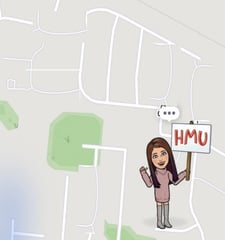How can we keep our children safe? This is undoubtedly the most frequently asked question of parents when it comes to sending our most precious assets to school. As we continue to hear of school violence in the news, parents are constantly trying to invest in and understand ways to protect their children.
My job as a security assessor is to take part in numerous walk-throughs to assess safety and security measures. I have looked at every aspect and initiative a school can take to ensure parents that the schools are doing everything they can to prioritize safety. I have been told that a good day in school is when nothing but learning happens…words that we hope to bring to fruition for every child in every school on every day.
It is not uncommon to only think of physical security in schools as the biggest defense against danger. Likely, when you think of safety in schools, school resource officers, cameras, secure doors, and secure windows come to mind as the first line of defense against any type of emergency. School officials work towards training and educating students on what to do during a lockdown drill, a fire drill, or a natural disaster, such as a tornado or earthquake.
However, it doesn’t stop at physical security. There is a whole virtual world out there that our children are engrossed in moment by moment. With school rules constantly changing, the ability for students to have phones in their constant possession in the classroom is becoming more of a real-world thing. School is no longer a “face-to-face only” haven of interaction.
I’d like to look into the most popular forms of social media being used by kids today and suggest some proactive ways parents can help protect their children against the dangers of the unknown.
Social Media
What comes to mind when you hear the words whisper, calculator, or wishbone? Quiet means of talking and harmless objects in our everyday lives? Not exactly. It’s not surprising these words aren’t immediately associated with location sharing, inappropriate content, or child trafficking. These are apps children have access to that encourage communication with strangers, anonymous bullying, and the concealment of lewd photos, videos, and messages.
The more popular apps allow for some parental controls and sharing limitations if one knows how to navigate the app. It’s important for parents to set the limits and follow up on the child’s app to make sure the restrictions haven’t been reversed. Understanding today's acronyms, key words, and how photos are taken can help parents, teachers, and first responders be vigilant when looking for harmful material presented on the most popular forums.
If navigating the internet seems like an intimidating task to you, you’re not alone. Get help from an older sibling, a trusted relative, or other social media-savvy adult to guide you through the necessary steps of these controls.
Snapchat
Snapchat is one of the more popular apps used by teenagers. This app allows for users to send messages, photos, or videos with the façade that the message will disappear within a few seconds. Users can also upload Snapchat stories that stay visible to those on a “friends list” for a 24-hour period. Even though there is a limited display period for messages and stories, anyone can screenshot a message, photo, video, or story, and spread that information to others or use it for harmful purposes.
With children as young as elementary school having a Snapchat account, they do not understand the vast world of internet strangers and the nefarious intentions so many people use these apps for. If deleting your child’s accounts or taking the devices away are not an option, what can you do? Here are some tips for safe usage:
- Know how to check your child’s privacy settings. Apply parental controls that allow you to choose who can be on their friends list to see and send “Snaps,” and who can view your child’s stories. If there are people on your child’s friends list that you do not recognize, verify with them who they are. If it’s not a person involved in their real-life friends circle, remove them.
- Remove the ability to be visible on the Snap Map. This feature allows others to see exactly where your child is in the world. It allows for zooming in that can adjust the map to a satellite photo providing a real life, albeit blurry, look into the area around your location. Children do not understand that this can give anyone the name of the street you live on. When you zoom out on Snap Map you can see the city or town name where a child lives. Entering the street name and town in Google Maps would provide someone directions to the area of your home, or to your child’s school. See the photos below (street names of example photos were removed):


These two photos show the location of an actual Snapchat user who is represented as an avatar. The photo on the left shows what the device screen would look like when the avatar is zoomed in. Rooftops of houses, trees, and roads are visible in a satellite version of this map. The photo on the right depicts what the Snap Map looks like prior to zooming in. On a normal device screen, the road names of each road in the photo would appear. A user would be able to zoom in to where the avatar is standing, see the road name, and potentially have a bird’s eye visual of the building and surrounding area where the person is located.
- Understand the lingo. Since internet communication became a thing, shorthand has become a popular way to type. Acronyms have come a long way from the original LOL, BFF, and OMG. Their meanings go much deeper and darker for the kids to sneak potentially dangerous conversations past any adult who may be standing over their shoulder. This list from the International Center for Digital Threat Assessment (ICDTA) can provide a parent or teacher with a breakdown of the need-to-know acronyms.
- Use the app to your advantage. If you are a teacher or school resource officer, know how to access stories on the Snap Map. This can show you if there are people in or around your school promoting dangerous or illegal behavior. An example of a story I found when I was an SRO showed a short clip of a person’s two feet while walking. Harmless, right? If you didn’t understand the meaning behind the video, it could quickly be overlooked. The high school in my area was geo-located in a tag with a pill emoji and the caption “HML-LMK”. This suggested that an individual in or near the school was in possession of an unknown pill or medication and was looking for other people, possibly students, to “hit my line” and “let me know.” Emojis and acronyms will be the most used way to get this type of information out to others.
TikTok
A webinar that I recently participated in provided a graph that showed TikTok users are watching 167 million clips PER DAY. While there are countless numbers of wholesome, caring, and educational videos promoted on TikTok, these are not the ones heard about on the news. TikTok challenges have quickly become a viral phenomenon that can put your child in harm’s way, physically and emotionally. Some of these challenges are illegal and have impacted schools significantly.
- As a parent or school employee, educate yourself on trending challenges on this app. A simple Google search will provide you with what is popular at the current time. Challenges such as "red flag in my room" and the "rumor has it" can give insight into your child's peers' activities in school and out of school. Or these challenges can provide SROs and administration with information on potential threats in the school.
- Use parental control and privacy settings. Set a screen time limit to minimize the amount of time your child spends on the app and use a strong password to lock this setting. Set the account to a restricted mode that blocks mature content.
- Understand and accept that kids will be kids. There is always a chance the app can be re-downloaded under a new account without these restrictions. Set up family pairing to manage the devices and apps. Then, make sure you have full access to your children’s phone and all their login information. The parents’ ultimate guide to TikTok provides numerous answers to questions and advice for the safest way to use this app as a family.
The final social media app I’d like to discuss is Instagram. This platform allows users to capture, edit, and share photos or videos with friends and family. Instagram has roughly two billion active users and is considered the most popular photo-sharing app worldwide. While it is not the most preferred app for U.S. teenagers, Gen Z and millennials make up most users. This means there are a lot of adults who could have access to your child’s sharing platform if you do not know how to protect their account.
- As with all other forms of social media, the privacy settings allow for a parent to restrict who sees their child’s photos (private mode). This prevents people who are not on the child’s friends list from seeing the posted material. It is important to remember to monitor the friends list. Know who each person is to prevent “trolls” or fake accounts from accessing private information. Children will often accept friend requests from people they do not know in order to attract a large number of followers. This can be dangerous as it provides a stranger with direct access to your child. Furthermore, location information could be obtained if a child posts a photo in a school uniform, or with the name of a mall or movie theatre in the background.
- School-aged kids often create multiple accounts to post public photos or videos with a sense that they will be viewed or “liked” by multiple people. This type of social media interaction gives a false sense of popularity, and kids will take efforts to publicly post to get more laughs or likes. As a parent, school resource officer, or school administrator, look out for posts that bully other students (or even adults), make threats, contain photos with any types of weapons, or include any type of dangerous challenge suggestions.
Communication is Key
Talk to your children about online safety. Be honest about the risks associated with meeting “friends” online. Your conversations will need to occur regularly and flow with the changes of the internet and ever-evolving social media platforms. Keep in mind that the internet can be a positive asset for children to get to know their peers and to make friends. However, it is vital that children understand that they should not meet anyone they have communicated with online without the knowledge and presence of a trusted adult.
I encourage you to understand how your child uses the internet and have them show you what they enjoy doing. While keeping safety as the first priority, remember to not be too critical if curiosity gets the best of them or unintentional access to inappropriate material is gained. Use this as an open door for communication about the content and why rules are important for these situations.
It is also important to instill trust in your child. Be someone they can come to when they have a problem online or if they see someone else having trouble. Explain to your child that adults such as school resource officers or guidance counselors can be trusted with information that potentially puts anyone in danger. The “see something say something” campaign promoted by schools encourages students and the communities to provide information in an effort to keep schools safe.
The world, both real and virtual, can feel like such a scary place at times. But it doesn't always have to be. By making the effort to engage with your children and their interests, you can build trust with your children while discussing different perspectives and introducing life-long lessons. It’s hard work being vigilant, but there are many resources out there at the tip of your fingers that will help you along the way. We live in a world that constantly promotes the negativity of social media, but a little proactivity, firmness, and involvement to find the good out there will go a long way. Your children will thank you later.



.png)

-1.jpg)
.jpg)
.jpg)
.jpg)
-2.jpg)
.jpg)


.jpg)
.jpg)
.jpg)
.jpg)
.jpg)

